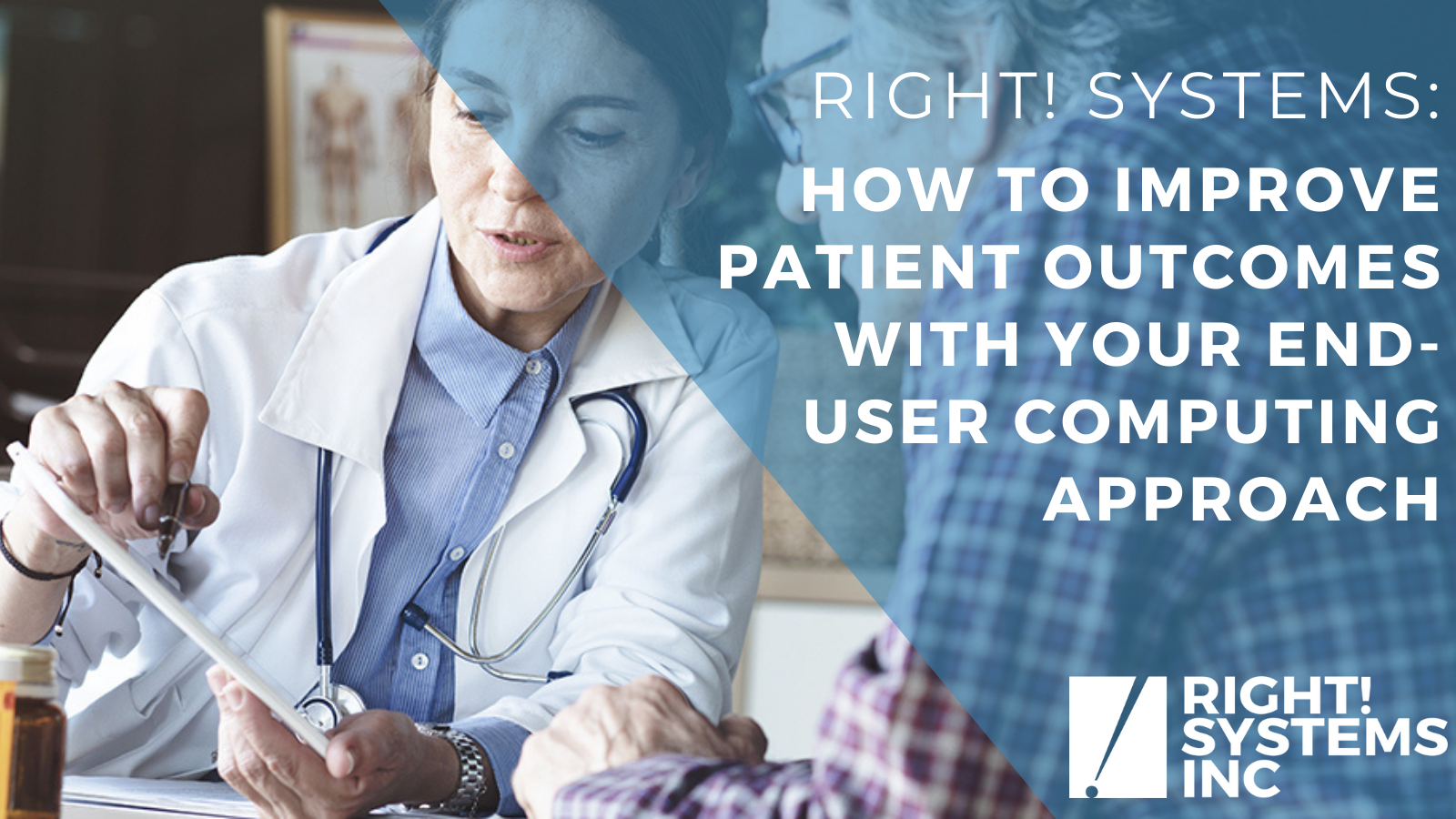Security Endpoints & User Experience in Healthcare IT

Today’s healthcare organizations rely on electronic health records (EHRs) to maintain patient histories and store the information needed to make treatment decisions. This dependence on EHRs means healthcare providers must optimize their end-user computing while maintaining HIPAA compliance standards for access to patient information.
Many hospitals and medical centers use legacy equipment that may not support modern EHR systems and could have security vulnerabilities. Medical practices often have multiple locations and need technology that can connect them and support further growth.
Healthcare providers also need networking technology that delivers fast response times so that diagnoses can be made based on current and accurate information and medical treatment can be provided with urgency.
Here's an overview of 5 technology best practices healthcare providers can follow to deliver the best patient care:
1) Implement a network solution that is designed for web application delivery.
Because doctors and other medical professionals depend on EHRs for the information they need to make healthcare decisions, a hospital or medical center must have a network that can deliver health records applications to healthcare workers whenever and wherever they are needed.
Application delivery solutions ensure the EHR systems perform optimally for a high-quality user experience. These solutions also provide the visibility needed to guarantee the security of crucial healthcare applications and the patient data that they process.
2) Ensure the network has load balancing capabilities.
Healthcare organizations must triage their patients to treat them efficiently. The same is true for healthcare workloads. Their network solutions must be capable of load balancing so that end users have a seamless experience when trying to access medical information.
Load balancing ensures the efficient distribution of workloads over available network resources for processing. Response times improve, ensuring that vital healthcare tasks can be performed quickly, improving patient outcomes.
3) Keep patient data protected & secure while allowing doctors the flexibility needed to care for patients.
HIPAA demands that patients be allowed to access their medical information, while unauthorized users are denied access. Records must be kept of access attempts for the purposes of compliance audits.
To maintain compliance, the network must ensure that sensitive patient data never ends up being stored on a medical worker’s device. Instead, patient data should be stored and protected in the main data center. Devices should also be protected so that patient data isn’t put at risk when healthcare workers must access the information necessary for treatment.
4) Use technology that supports endpoints & improves access to patient information
Medical workers are increasingly using devices to communicate with patients, take notes, and check medical records. Recently, healthcare providers have been turning to remote desktop services (RDS) virtual desktop infrastructure (VDI) to access information as they move between points of care. Care providers may use devices when they make home visits or work out in the field.
The network should support these devices so that healthcare workers can access patient information and update records. With the right network, doctors and other healthcare professionals can benefit from a smooth and responsive experience while using remote devices.
5) Use technology that supports endpoints & improves access to patient information
When healthcare organizations expand, opening new locations, they need to adopt technologies that can grow with them. The network and data center must be flexible and scalable to accommodate expansion while still delivering uninterrupted access to healthcare information.
To keep healthcare costs down, medical providers need to control technology expenses. Otherwise, the costs would be passed on to the patients. Virtualization provides a way to scale while cutting down on hardware and software licensing costs. For example, VDI reduces the technology footprint and standardizes endpoints across locations.
Following Technology Best Practices for Better Patient Care
These technology best practices help healthcare organizations evolve their approach to patient care. By supporting and protecting endpoints with modern networking, security solutions, and virtualization technologies, doctors and nurses can make more informed decisions in real-time, increase patient access to care, and improve outcomes.
As a Citrix Platinum Solution Advisor, Right! Systems can help healthcare organizations leverage leading networking technology to support end-user computing and deliver EHRs. With Citrix networking, server, and virtualization technologies, healthcare providers can overcome technology and compliance challenges. Right! Systems delivers Citrix expertise and managed services for significant savings versus hiring an in-house IT team.
CTA
Learn how Right! Systems helped one of our healthcare customers optimize its end-user computing. Read the case study.


